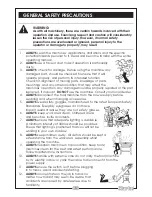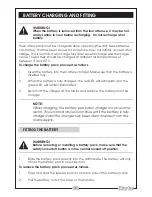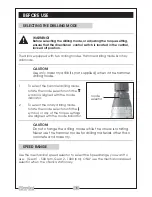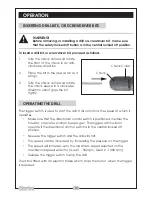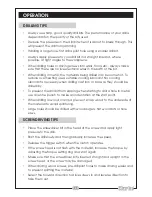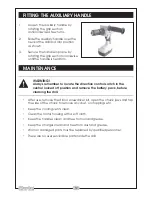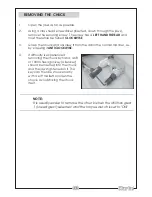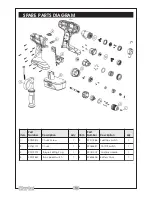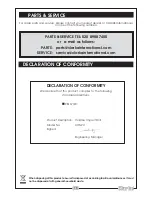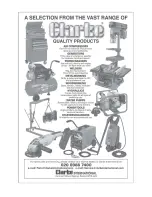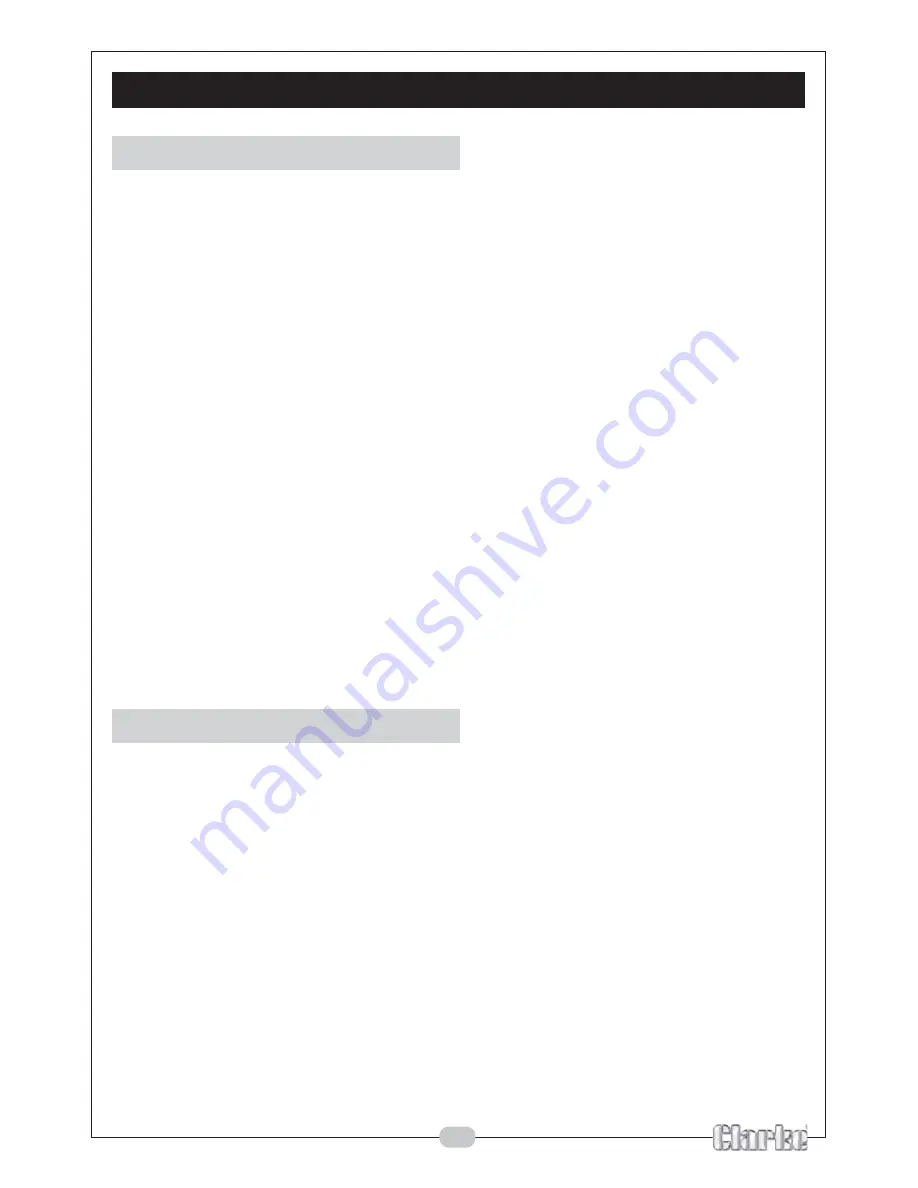
11
OPERATION
DRILLING TIPS
•
Always use sharp, good quality drill bits. The performance of your drill is
dependant on the quality of the bits used.
•
Reduce the pressure on the drill bit when it is about to break through. This
will prevent the drill from jamming.
•
If drilling a large hole, first drill a pilot hole using a smaller drill bit.
•
Always apply pressure to your drill bit in a straight line and, where
possible, at right angles to the workpiece.
•
When drilling holes or driving screws into walls, floors etc., always make
sure that there are no live electrical wires in the path of the bit.
•
When drilling in metal, the materials being drilled can become hot. To
reduce overheating use a suitable cooling lubricant. No cooling
lubricant is necessary when drilling cast iron or brass as they should be
drilled dry.
•
To prevent the drill bit from slipping when starting to drill a hole in metal,
use a centre punch to make an indentation at the start point.
•
When drilling in wood, clamp a piece of scrap wood to the underside of
the material to avoid splintering.
•
Large holes should be drilled with wood augers, flat wood bits or hole
saws.
SCREWDRIVING TIPS
•
Place the screwdriver bit in the head of the screw and apply light
pressure to the drill.
•
Start the drill slowly and then gradually increase the speed.
•
Release the trigger switch when the clutch operates.
•
If the screw head is not flush with the material, increase the torque by
adjusting the torque setting ring and start again.
•
Make sure that the screwdriver bit is inserted straight and upright in the
screw head, or the screw may be damaged.
•
When driving wood screws, pre-drill pilot holes to make driving easier and
to prevent splitting the material.
•
Select the forward direction to drive screws in and reverse direction to
take them out.
Summary of Contents for Contractor CON24
Page 16: ......



